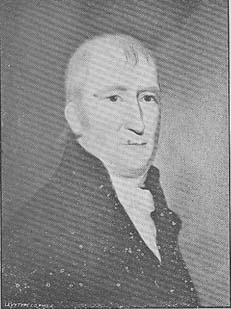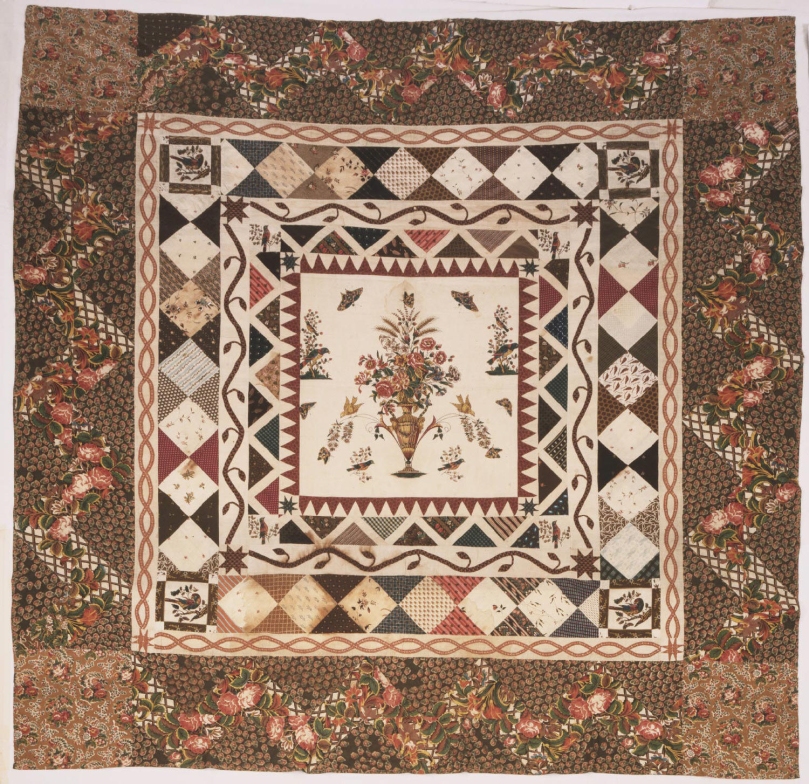John Hewson was one of the early calico printers in America. He learned the craft of wood block printing while working at Bromley Hall near London. Benjamin Franklin, while in London acting as an agent for the colonies, met John Hewson and was asked by Hewson’s family to take him to the new world. According to his daughter, Sarah Alcock, John Hewson had did not believe in the divine right of kings, which could have made life difficult for him in England. In 1773, he immigrated to Philadelphia with his family and some smuggled printing equipment. At the time it was illegal to take printing equipment out of England. He set up a calico printing factory in 1774 and began printing high quality and well sought after textiles.

He is well known for his wood block printed vases. This style of printing uses a carved wood block to apply dye or mordant to a fabric. Then the fabric is dyed, typically with madder or indigo. Additional detail is added to the fabric by hand brushing (a technique known as ‘penciling’) dyes (or mordants). The resulting textile is beautifully detailed and was prized by colonials. Among his customers were George and Martha Washington.

John Hewson joined the 1st Republican Grenadiers in 1775 and when the group disbanded, organized his own militia. When the British captured Philadelphia in 1777, Hewson was forced to flee with his household, and some of his printing equipment. The British ransacked and destroyed much of his factory. Hewson was captured by the British in New Jersey and spent some time in jail until he escaped to rejoin the cause. After the war he rebuilt his factory and it remained in business until about 1820.

The printed calicoes or ‘chintz’ were often reclaimed after being used in dresses and petticoats. The dress below is a 1780 fashion with an Indian chintz from the Coromandel coast.

A quilt’s center medallion was made from a whole design or motifs from the chintz were placed using appliqué onto a background, a technique known as ‘broderie perse.’ In many of these quilts from the late 18th and early 19th century motifs from the chintz which forms the center medallion are repeated in the outer borders.
Have a quilty day!!
References:
http://quilt1812warandpiecing.blogspot.com/search?q=john+hewson
http://www.philamuseum.org/collections/permanent/108224.html
http://vfparkalliance.org/documents/british-campaign-for-philadelphia.pdf
http://americanart.si.edu/collections/search/artwork/?id=36857
http://collections.vam.ac.uk/item/O88601/dress-unknown/



Thank you, love learning about the history of fabric and the needle arts